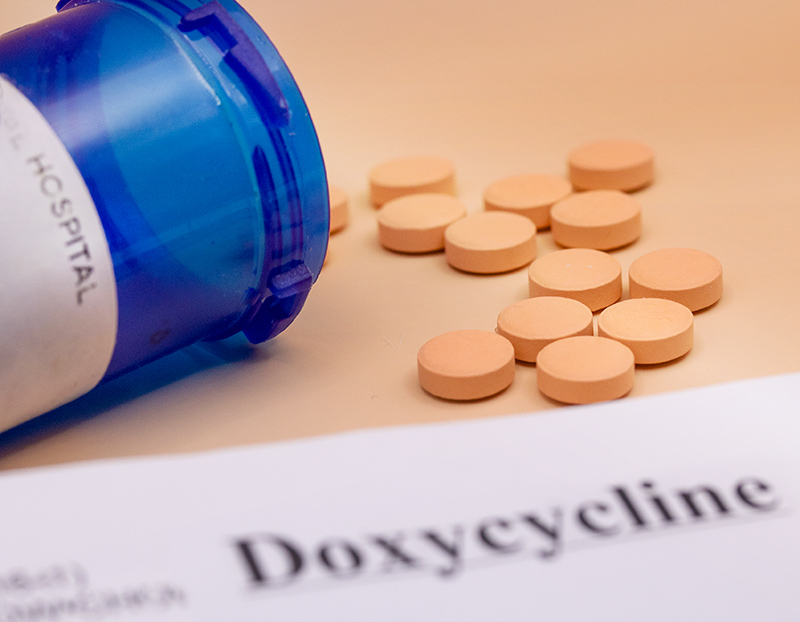Doxy-PEP and STIs: What You Need to Know Now
The CDC issues national guidelines for use of doxy-PEP to prevent STIs, amidst alarming rise in infection rates.

Incidences of sexually transmitted infections have been on the rise in the U.S., and around the globe. Last week, in a move to combat increasing rates of STIs like syphilis, gonorrhea, and chlamydia, the U.S. Centers for Disease Control and Prevention (CDC) released clinical guidelines on the use of antibiotic doxycycline as post-exposure prophylaxis, or doxy-PEP, to prevent bacterial sexually transmitted infections.
In a report published June 6, the CDC states that “novel approaches are needed to address the STI epidemic, especially for populations disproportionately affected.”
Those populations would include gay, bisexual, or other men who have sex with men, and transgender women.
Additionally, according to statistics presented at a recent briefing hosted by the International AIDS Society, young people between the ages of 15 and 24 are most at risk for acquiring STIs.
These increases have been observed worldwide, across various demographics. Here in the U.S., with the CDC raising alarms in its most recent STI Surveillance report that syphilis rates were as high as they’ve been since the 1950s, and localities like D.C. and San Francisco experiencing outbreaks of gonorrhea, there’s been plenty of discussion around what’s driving the increase in rates of STIs.
“I think that there are probably a variety of causes,” says Dr. Hyman Scott, the Clinical Research Medical Director at Bridge HIV, a UCSF-affiliated health clinic in San Francisco. Strut Clinic, based in the Castro, has been on the front lines fighting these outbreaks.
“Most of these infections are asymptomatic. So, people can have either syphilis, chlamydia, or gonorrhea and unknowingly pass it along to their sexual partners,” Scott, who also serves as the medical director at the San Francisco AIDS Foundation, explains. “And, as we’ve had more screening available, we’re identifying those infections that are most likely to be asymptomatic.”
There was, initially, a concern that infection rates might be being driven by PrEP, Scott points out. “But I think a lot of the data we looked at show that this occurred before PrEP was even widely available. Even before PrEP, we saw this increasing rate of STIs that was likely driven by some decreases in condom use. So, I think that’s absolutely a part of it.”
Indeed, many clients he sees are using “non-condom strategies,” as Scott puts it. “And those can definitely increase the risk of transmission of STIs.”
Fortunately, doctors and researchers have found doxy-PEP to be an effective and well-tolerated tool for reversing these concerning trends. San Francisco — where rates of chlamydia, gonorrhea, and syphilis are higher compared to the U.S. overall — was the first jurisdiction in the nation to release guidelines for doxy-PEP, and implement the regimen as an STI prevention strategy.
The treatment entails using a single 200mg dose of doxycycline within 72 hours after oral, anal, or vaginal sex to prevent possible infection.
San Francisco’s guidelines further narrowed down eligibility to the most affected populations, recommending doxy-PEP to cis men and trans women who have had “a bacterial STI in the past year, and report condomless anal or oral sexual contact with [more than one] cis male or trans female partner in the past year.”
Guidelines also recommended that patients with a history of syphilis should be prioritized for doxy-PEP. Those recommendations don’t include cis women because studies have shown that doxy-PEP is not as effective at preventing STIs among cis women. Scientists have been stumped for answers to exactly why that’s the case.
Still, by most accounts, the rollout of doxy-PEP in San Francisco has shown signs of success.
As reported in the recent IAS briefing by Dr. Stephanie Cohen, of the San Francisco Department of Public Health, the city saw a significant decline in chlamydia and early syphilis cases year-to-year among men who have sex with men, since doxy-PEP was first implemented in November 2022.
Dr. Scott was part of a UCSF-Bridge HIV clinical research team that also saw optimistic results after implementing doxy-PEP.
“When doxy-PEP was shown to be effective in preventing gonorrhea, chlamydia, and syphilis, we moved in at the city level for a policy that we could provide guidance to providers,” Scott recalls.
“We knew we wanted to implement doxy-PEP, and we wanted to know what was going to be the impact of that in our clinic once we did, because we wanted a real-world experience for the impact of doxy-PEP on STIs.” So, following the release of city guidelines, they rolled out doxy-PEP within the clinic.
“We looked at our PrEP clients who come in pretty regularly every three months for testing,” he says. “We wanted to see, before we implemented doxy-PEP and afterwards, what was the impact of this on STIs among this group of people who we follow very closely?
“What we saw was a more than 50% decline in STIs in less than a year. That was a pretty astounding finding. It was very rapid. It was very, very significant in how quickly we saw this decline.”
Scott presented the Bridge-UCSF team’s findings at this year’s edition of the influential Conference on Retroviruses and Opportunistic Infections. He also presented data on the doxy-PEP rollout at the Strut Clinic, which serves over 8,000 individuals.
Ultimately, his team concluded that “doxy-PEP uptake was high reflecting strong demand when offered as part of routine PrEP care,” and “overall STI incidence declined rapidly after implementation demonstrating high impact of this intervention in a real-world setting.”
In June 2023, Seattle joined San Francisco in issuing citywide doxy-PEP guidelines. In November, New York City’s Department of Health, responding to “high and increasing rates” of STIs, also issued guidelines.
Such measures are key to providing information on dosing and prescribing guidance, and benefits and risks, and allowing doctors and patients to make informed decisions about their health — particularly in dealing with transmissible viruses that affect public health.
And, while online clinics and healthcare providers, like Mistr, have made doxy-PEP available to patients, and private providers might have been responsive to patients’ requests, finally having national guidelines from the CDC will encourage broader access.
“I do think the guidelines will be important to support a more national rollout,” says Scott. “This is true for PrEP as well. It allows the providers to prescribe this in a setting where they have some recommendations to follow.”
He adds that doxycycline is a generic drug and not expensive, “so it’s covered by most insurances.”
As part of a comprehensive approach to preventing STIs, doxy-PEP has proven to make a difference at a time when it’s urgently needed. “And I think that we want to ensure we get it to the people who we think most need it,” Scott says, adding that messaging is a big part of the battle.
“We’d want to shy away from things like ‘high risk,’ and that kind of language, because that, I think, stigmatizes people,” offers Scott, explaining that people for whom doxy-PEP might be a benefit, might not see themselves as high risk.
“We don’t want to have people think, ‘Oh, I’m not high risk,’ when there’s something that we recommend for them. We saw this with PrEP. We learned a lot of lessons with PrEP. And we have to ensure we actually implement those lessons that we learned. Remove the stigmatizing language, make this accessible, ensure our policies and recommendations are inclusive enough to meet the needs of the people for whom we want this to be available.”
Support Metro Weekly’s Journalism
These are challenging times for news organizations. And yet it’s crucial we stay active and provide vital resources and information to both our local readers and the world. So won’t you please take a moment and consider supporting Metro Weekly with a membership? For as little as $5 a month, you can help ensure Metro Weekly magazine and MetroWeekly.com remain free, viable resources as we provide the best, most diverse, culturally-resonant LGBTQ coverage in both the D.C. region and around the world. Memberships come with exclusive perks and discounts, your own personal digital delivery of each week’s magazine (and an archive), access to our Member's Lounge when it launches this fall, and exclusive members-only items like Metro Weekly Membership Mugs and Tote Bags! Check out all our membership levels here and please join us today!



























You must be logged in to post a comment.